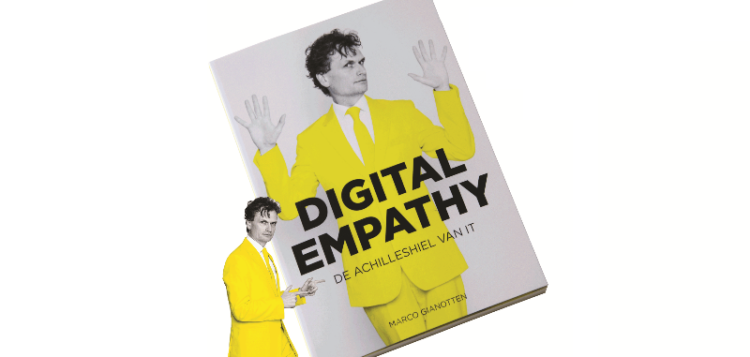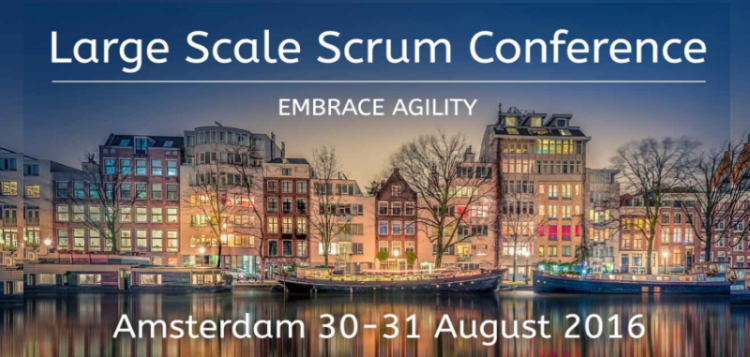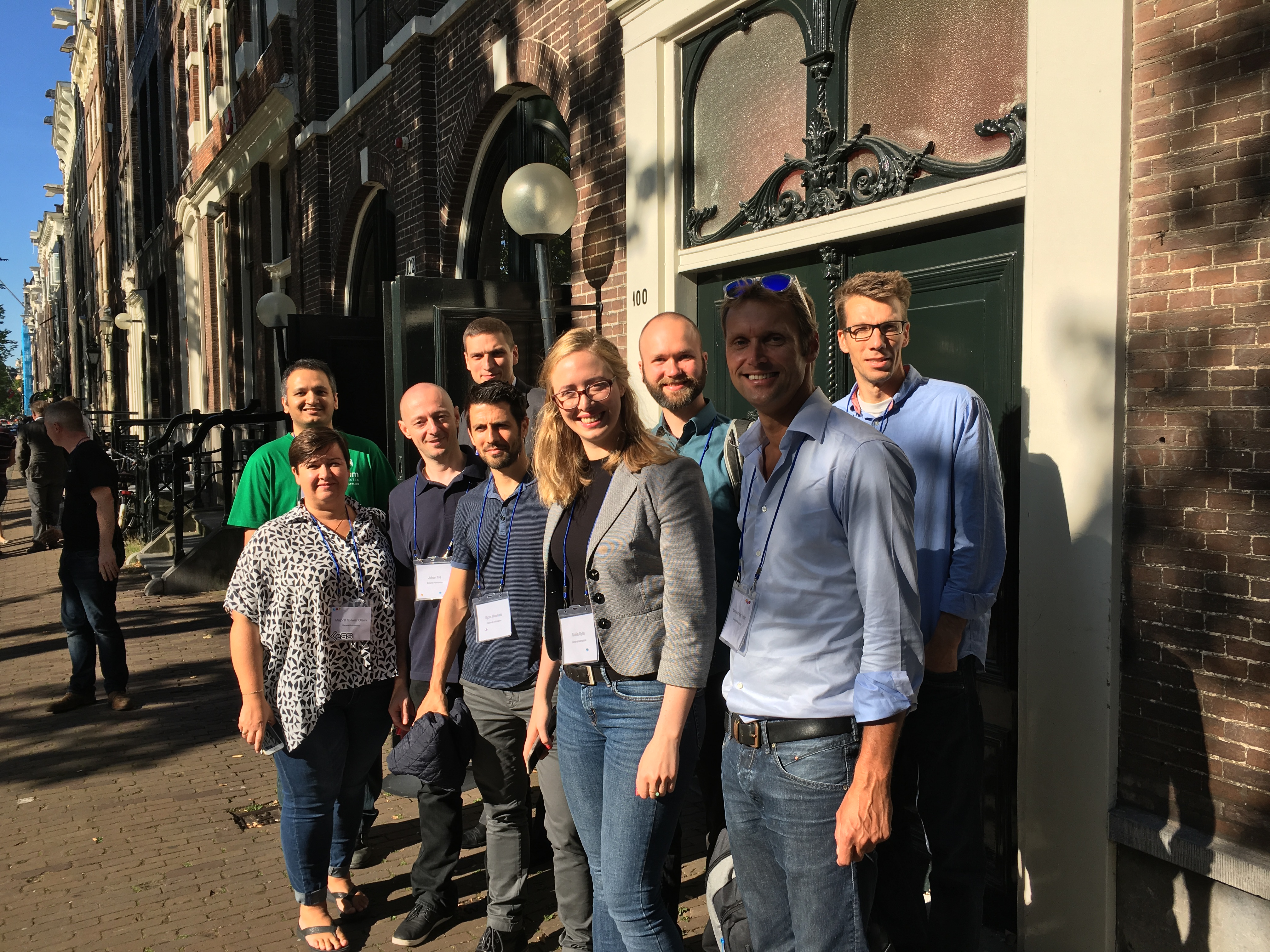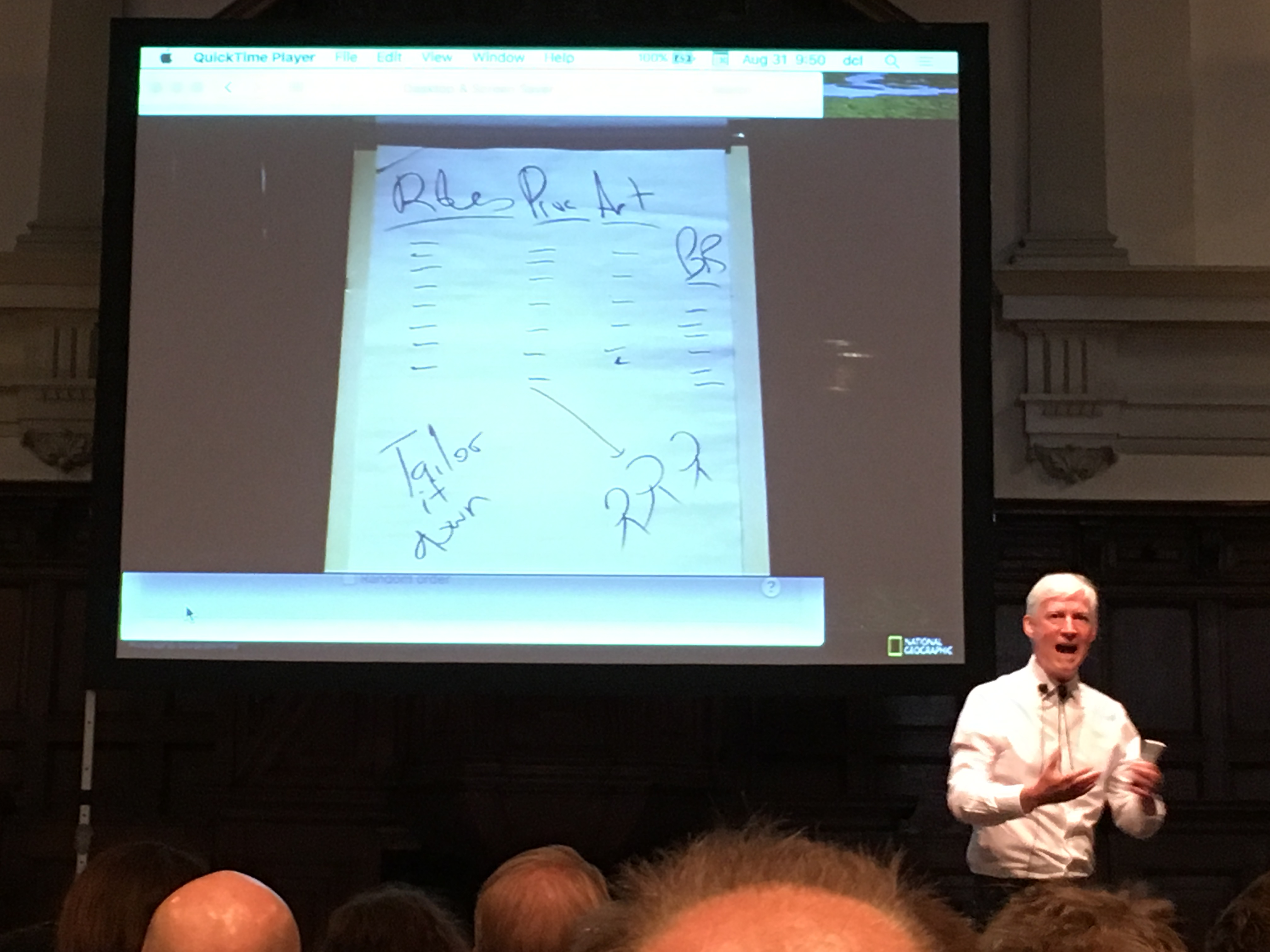
Digital Empathy
Digital Empathy – De achilleshiel van IT, de eerste twee woorden van de titel van het boekje van Marco Gianotten zijn zowel paradoxaal als prikkelend. Zoiets als binair inlevingsvermogen, nullen en enen – maar dan met gevoel. Bestaat deze combinatie überhaupt wel? Voor praktisch iedere IT-manager biedt Digitale Empathy – de Achilleshiel van IT van Marco Gianotten een interessante kijk op de huidige werkwijzen en contractuele afspraken die IT partijen met elkaar en de business aangaan. Empathie is wat vaak ontbreekt en juist daarvoor breekt de auteur een lans. In zijn boekje Digital Empathy – de achilleshiel van IT behandelt Marco van Gianotten op een toegankelijke manier de behoefte aan empathie in het vak van IT-management. Met treffende voorbeelden en een scheutje theorie schetst hij een modern alternatief voor de huidige afsprakenkaders en uitgangspunten zoals deze gebruikelijk zijn binnen IT afdelingen.
Het beknopte boekje is in een handzaam formaat gegoten en bevat 3, min of meer gelijke, hoofdstukken voorzien van illustraties en toepasselijke quotes.
Hoofdstuk 1 – Op weg naar een IT-crisis?
In het eerste hoofdstuk schetst de auteur de korte geschiedenis van IT-afdelingen en hun managers zoals deze in de laatste 50 jaar zijn uitgegroeid tot de spil in menig organisatie. De eisen die momenteel gesteld worden aan de afdelingen, maar nog meer aan de mensen die hierin werkzaam zijn, blijken drastisch veranderd. Hiermee zijn de geijkte vaardigheden zoals abstract denkvermogen en analyse – veelal voortkomend uit de logisch denkende linkerhersenhelft – niet langer toereikend. Er is meer behoefte aan balans in de gevraagde skill set van betrokkenen en het hebben en gebruik van empathisch vermogen is daarbij essentieel.
Hoofdstuk 2 – De ingrediënten van IT nieuwe stijl
Wie regelmatig vliegt, begrijpt direct het voorbeeld van Mintzberg in hoofdstuk 2. Het illustreert hoe lastig organisaties het zelfs nu nog vinden om vanuit klantbeleving hun dienstverlening in te richten. Dit wordt nog een stap lastiger als het twee IT-organisaties betreft die een samenwerking aangaan. De meest voorkomende vorm waarin een samenwerking is vastgelegd, is vaak een Service Level Agreement, kortweg SLA. Met voorbeelden geeft de auteur invulling aan de nieuwe ingrediënten die nodig zijn voor een succesvolle samenwerking: openheid, inzet van de rechterhersenhelft en focus op het resultaat voor de business. Met andere woorden een ‘SLA nieuwe stijl’.
Hoofdstuk 3 – Experience first met de XLA
Het zwaartepunt van het boekje ligt op het begrip eXperience Level Agreement (XLA) en hoe je hiertoe komt. Maar wat is een XLA? Met die vraag start hoofdstuk 3. Zoals de auteur aangeeft is een XLA ‘geen product, geen dienst, geen model.’ Hij maakt handig de brug naar meer bekende termen als DevOps en Agile. Ook dit zijn principes welke tot uiting komen in de wijze waarop mensen hun werk uitvoeren. Een XLA stelt de beleving van de (interne) klant centraal en vult pas daarna harde KPI’s en interne sturingsmodellen in. Hiermee geven organisaties zichzelf de kans een betere aansluiting te vinden met diezelfde klant. Dat dit nodig is blijkt wel uit de kenmerken en verwachtingen van generaties Y & Z en de Millennials. Met een grote glimlach bekeek ik de geschetste Millennial Maslow piramide. De auteur heeft aan het origineel twee lagen onderaan toegevoegd: Battery en daar bovenop Wifi. Als ik zie hoe de huidige generatie jongeren in hun zoektocht naar Pokémons het park bij mij om de hoek onveilig maakt, zou dit zo maar eens waar kunnen zijn.
Tot slot
Het formaat, de vlotte stijl en de vormgeving met ondersteunende afbeeldingen en uitspraken maken dat je Digital Empathy – de Achilleshiel van IT in één adem uitleest. In een avond of een ochtend, je zult niet kunnen stoppen. Niet dat er revolutionaire ideeën naar voren komen, maar de overduidelijke behoefte aan empathie en begrip is datgene dat na het dichtslaan blijft hangen. Voor Service Level Managers, inkopers of dienstverleners is dit boek een echte aanrader. Daarnaast biedt het voor iedere manager in IT een andere kijk op de samenwerking met partners en afdelingen.
Over deze recensie
Deze boekrecensie is tevens verschenen op www.managementboek.nl, meer informatie over het boek of de auteurs is te vinden op giarte.nl/digital-empathy.
Filled Under: book review Posted on: 20 September 2016



